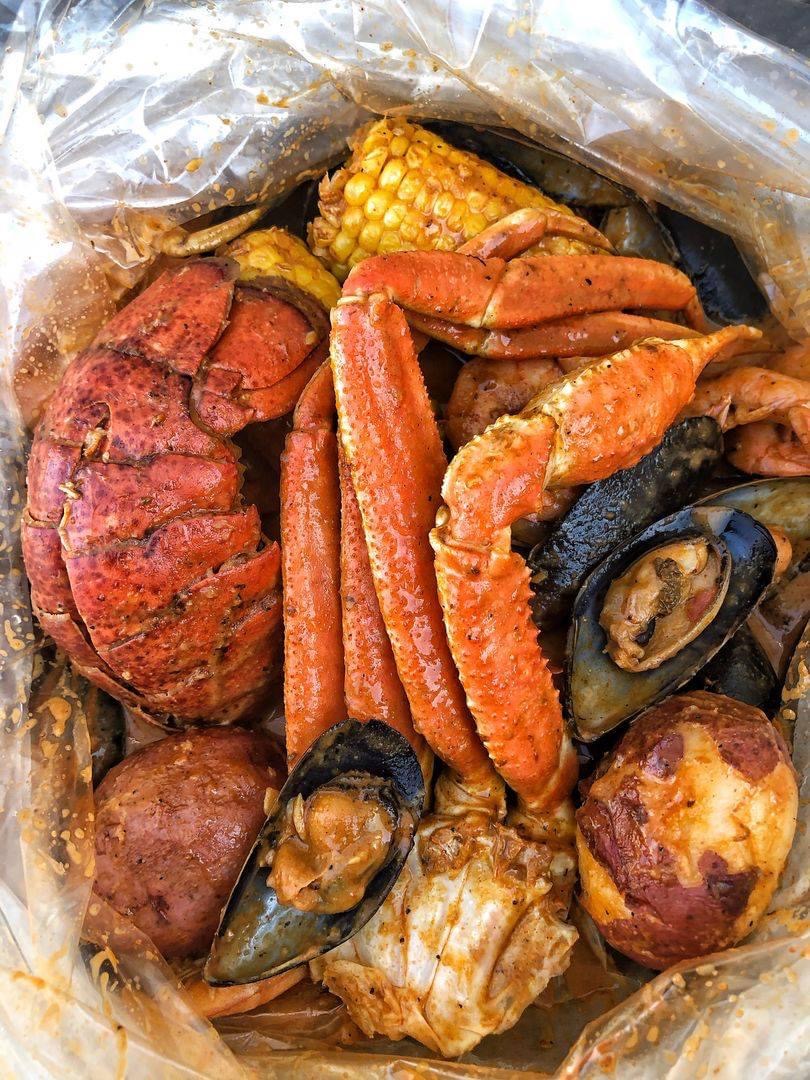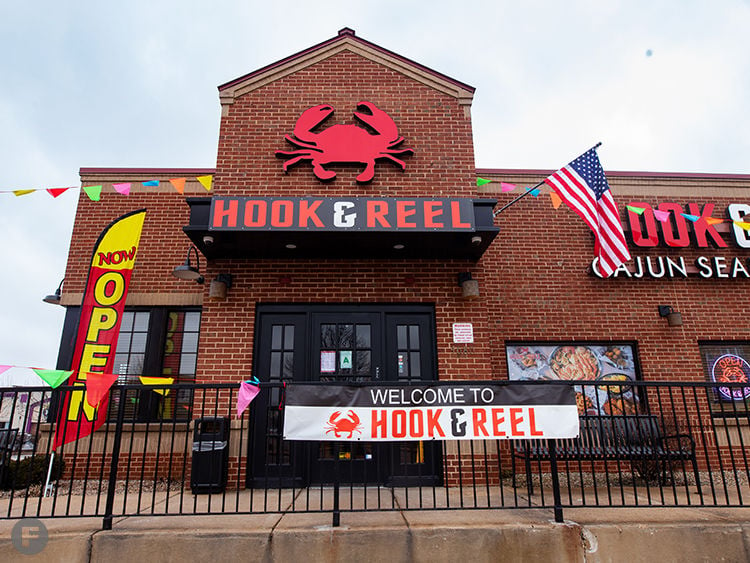
Happy Hour is at the bar from Sunday through Thursday from 3-7pm and Friday & Saturday from 10pm-12am. All ingredients combine for a one of a kind aroma and finger licking experience that makes people want to come back over and over again. Hook & Reel uses the finest and freshest seafood, coupled with fresh garlic, lemon pepper, herbs and spices, and chili powder. I ordered mine with king crab leg, crawfish, sausage and oysters. The signature boils are served in a bag with your choice of proteins, seasoning, spice level and includes corn & potatoes.

Their most popular menu item is their signature boil with Hook & Reel blend sauce. Their unique presentation on their seafood boils sets them apart from their competitors and they pride themselves on serving only high quality seafood. They are really good, succulent and huge.Ĭlick the video below to watch how their seafood boils are served: They have a nice crispy coating on the outside and a sweet flavor and tender texture on the inside. I highly recommend their new fried scallops as an appetizer. You can simply select your choices of meat, seafood, vegetables and what you’ll get is a culinary creation that will make you feel like you’re down in New Orleans. Their menu has a wide variety of different choices. Their food quality, friendly service and cleanliness will exceed your expectations. Hook & Reel Orlando is a beautiful restaurant with a unique decor, awesome seafood and a hard-working staff that will guarantee you a great time. With all of the success from the first store, more stores started popping up across the country so that Miller could share his delicious seafood and “cajun experience” with everyone that were inspired by his trips in New Orleans, Louisiana where he admired their Southern flavor profile and spin on French Seafood. He opened the first restaurant in Lanham, Maryland and it was an instant hit. Hook & Reel opened in 2013, by the founder Miller. This is the webhook.We were invited to check out Hook & Reel Cajun & Bar on West Colonial to experience what they have to offer and we thoroughly enjoyed our visit. Now, if I start the server, (i.e running the whole file), I would have an endpoint [ exposed and ready to accept “POST” requests from anyone (who is using the same network as I am, because this server only runs locally on my computer right now).Īs you see, we do not ping the server whenever we want to see if there’s new data, but rather we wait for the server to send us data to this endpoint. In practice, you would take this data and process it in a way that’s useful for you. Right now, all we do is print the data sent to the endpoint: [. Next, we need to create a route for the server to send data to. Ideally, you would want something more complicated than this for a server but this will do for now to test webhooks. This is it… That’s all you need! This simply starts a server locally using the 8080 port. To set up the simple server, I will be using Flask in python. Expose an endpoint to accept data from a POST request.Let’s set up a quick server and see how webhook works. Everyone does this differently, it could be in the form of a secret encoded hash from the payload, or maybe only whitelisted IPs can send to the webhook.

The server you are allowing webhook requests from would typically use some sort of security system to make sure the events you receive on that endpoint were indeed from them. Once the server accepts the request, it would start sending data for the “subscription” you made whenever it’s available. You open an endpoint on your server and create a “subscription” with the server you’re trying to get data from. Webhooks are actually very simple from the top-level perspective. Instead, a better implementation would be opening an endpoint to accept data to which the server will send the data to whenever it’s available. This consumes so much energy and resources on your side (and the server’s side) for no reason since you aren’t getting what you want 99% of the time. Imagine you continuously asking a server if there is the data you’re looking for. Similarly in the world of REST APIs, webhooks are saviors in knowing when an event has happened. This way, as soon as a fish bites, you know instantly and you reel it in. Instead, if you used a line with a fishing hook, you can just leave the hook in the waters without you putting much effort into it. This is not a very fun way of fishing because you are committing so much manpower and energy to something while not knowing if the method would return any results.

Imagine you went fishing with a giant net.


 0 kommentar(er)
0 kommentar(er)
